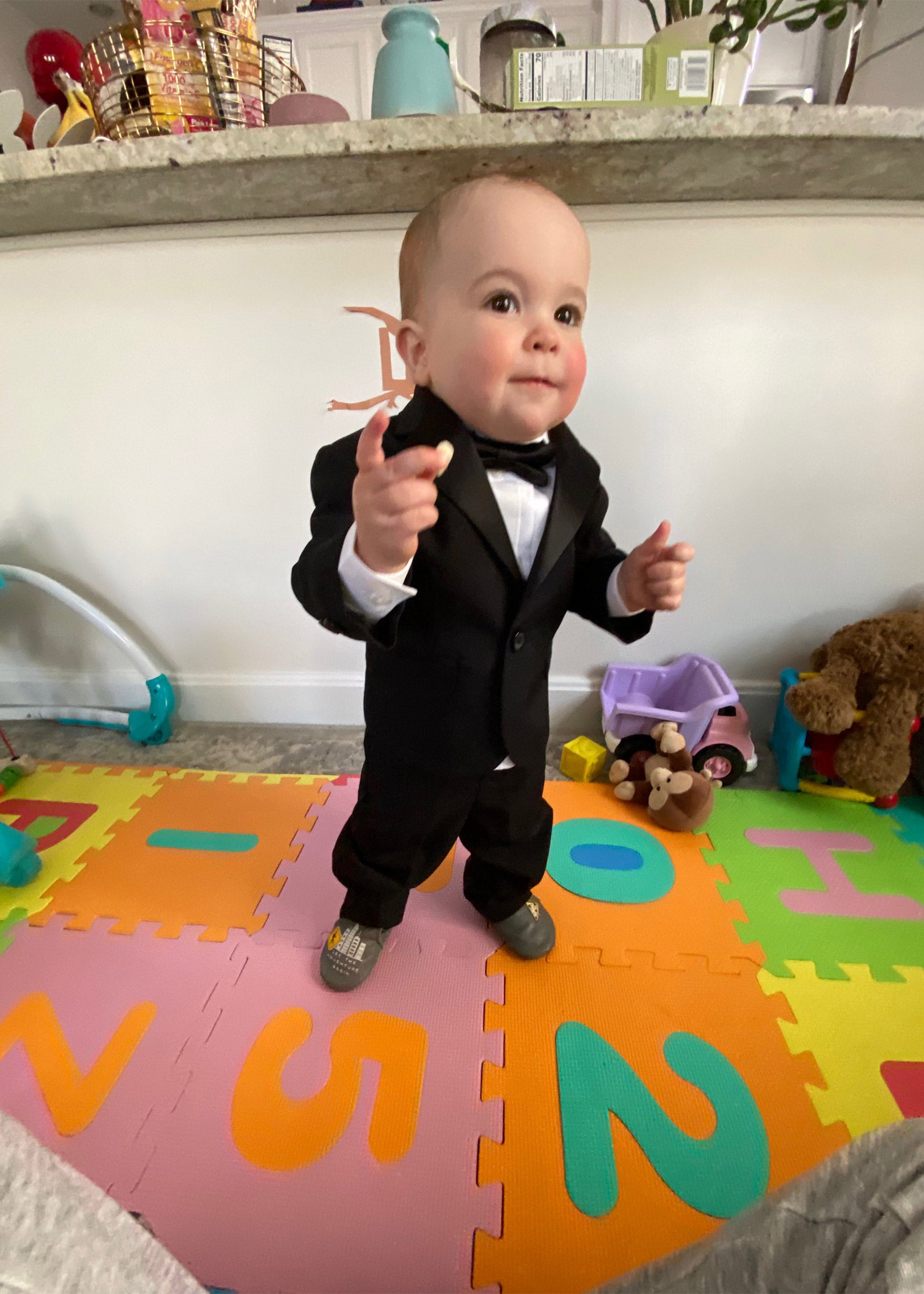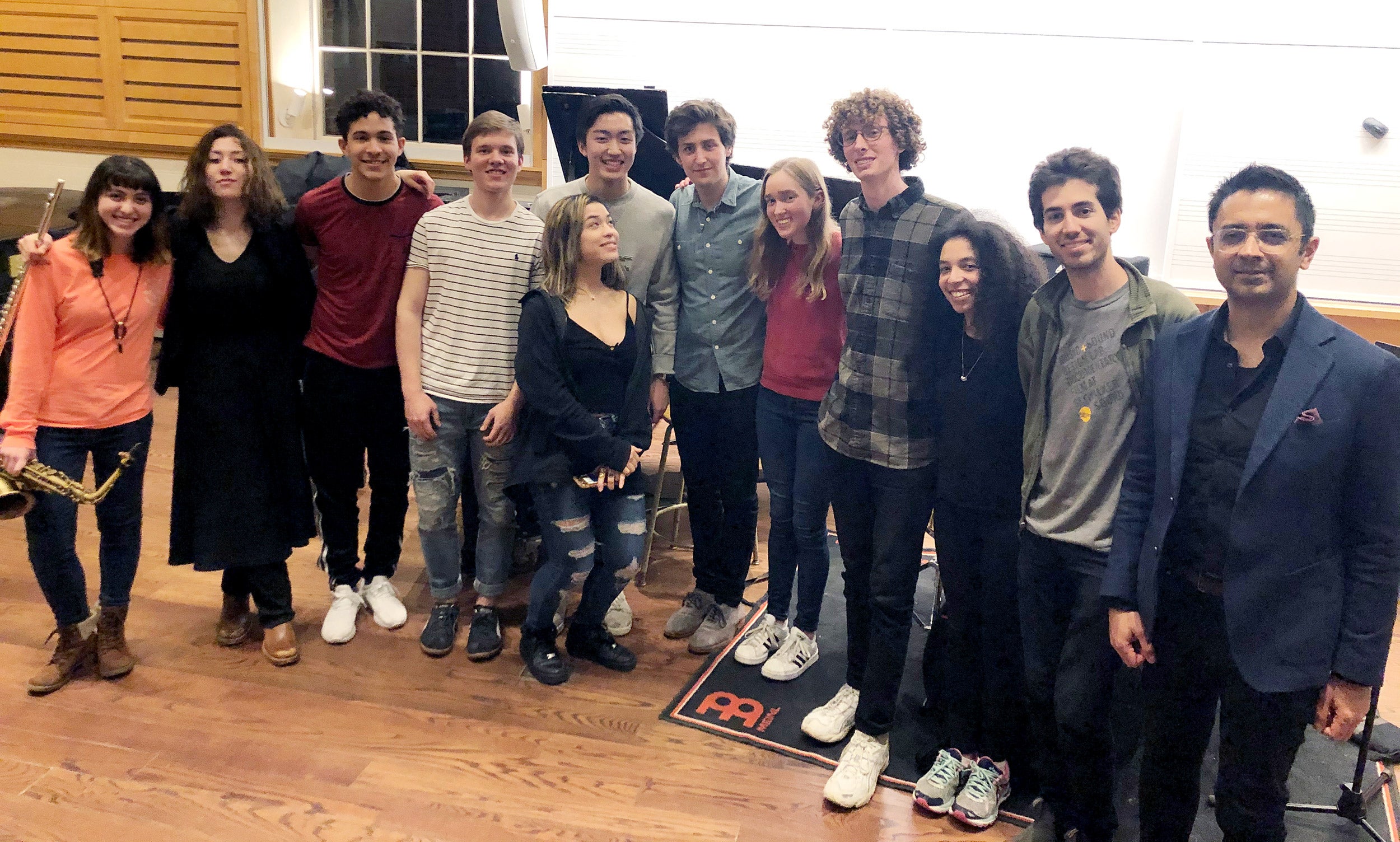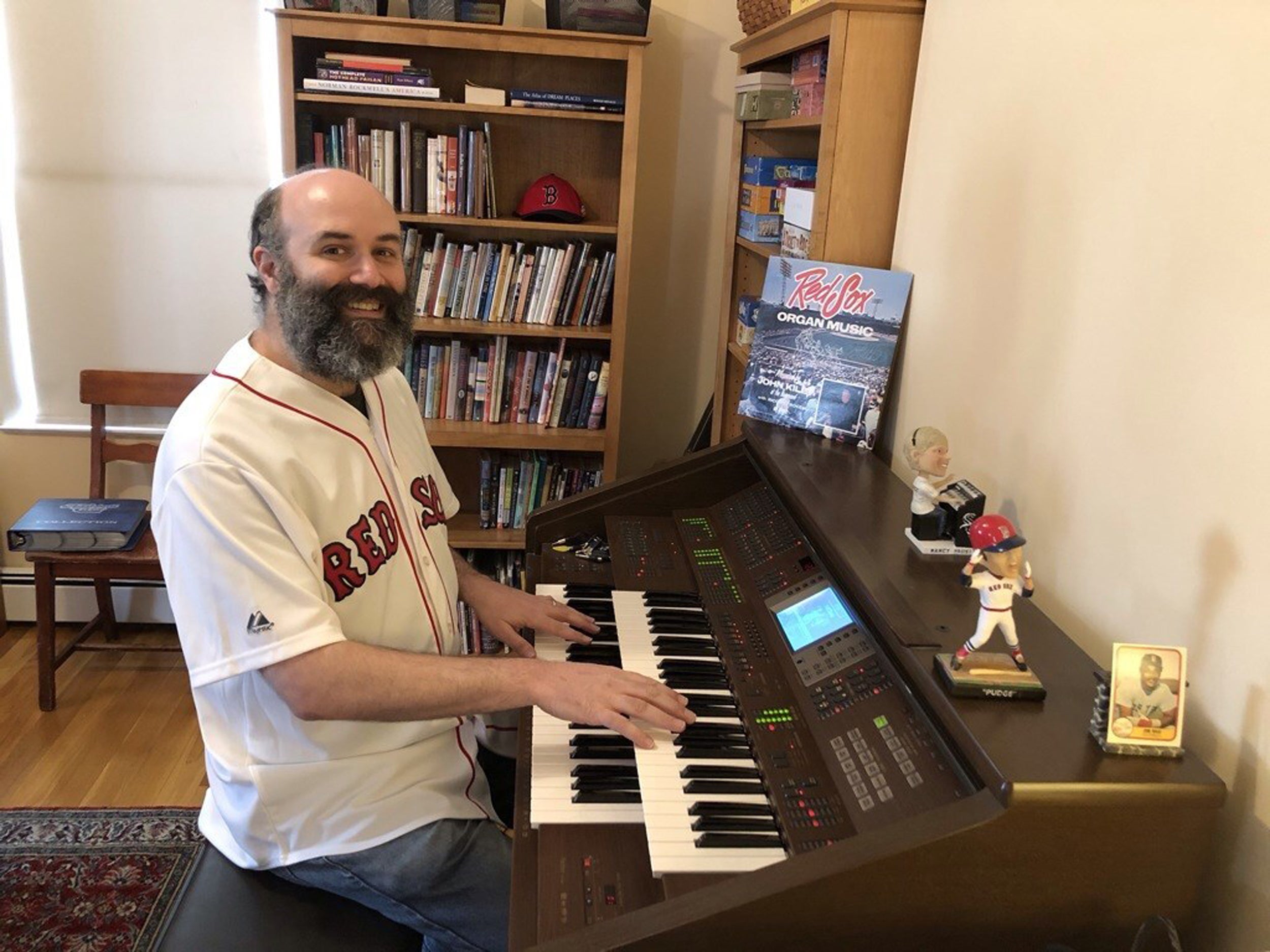
Walking with my baby; an eclectic ‘MixTape’; and taking people back to the ballgame
More stories from faculty, students, and staff about work and life in the pandemic
by Juan Siliezar, Jill Radsken, Lesley Bannatyne, and Manisha Aggarwal-SchifelliteShannon Ingraham felt shell-shocked when she started working from home.
“We went from having full-time child care at day care to becoming the full-time child care ourselves,” said the department administrator in the FAS Office of Finance. “I knew we would be busy trying to balance working from home and my wife’s schedule [she is a physician who is still seeing patients]. My strategy was to buy every toy Leo had enjoyed at day care while my wife tried to focus on the new work schedule.”
Leo just turned 1, an occasion that prompted Ingraham to also buy him a tuxedo. She describes young Leonardo Insogna as a happy guy who likes to eat puff snacks, watch for the Federal Express truck, and talk gibberish. And a few weeks ago, he repaid her generosity with a kind of largess of his own.
“I thought he would take his first steps at day care,” she said. “He had been taking a step and falling, but then one morning I took him into the living room during a work meeting, and he just started walking toward me! I squealed as loudly as possible and then took out my phone to capture the moment. There are a lot of grandparents who want to see that.”
Ingraham was thrilled with Leo’s achievement, though it did come with a price: Now she has to scramble to childproof the house.
“I have to hover now because he wants to walk everywhere. He has his hands in the air waddling around,” she said. “It’s nerve-wracking.”
Feeding time
Every Monday, Wednesday, and Friday, Javier Marin follows the same routine. He drops his wife at her nanny job in Jamaica Plain, then heads to the Harvard Museum of Natural History where he cares for a variety of creatures and critters.
There are the arthropods, which include scorpions, Madagascar hissing cockroaches, millipedes, two tarantulas, and another type of arachnid called a vinegaroon (or “Vinny” to Marin). There are the marine animals, like the spider crab or a pair of horseshoe crabs. Then there are the vertebrates, which aren’t on display for the public but are used for the museum’s educational programs. Those include a Mexican milk snake, an eastern box turtle, two female leopard geckos, and a beloved 18-year-old African bullfrog.
Marin is one of the museum’s bilingual educators. In normal times, he helps run many of the museum’s programs for school-age children and their families. In the COVID-19 era, Marin is the go-to caretaker for the animals.
“Depending on the day, I’ll do different things,” Marin said. “But for the most part, there are things I do generally every single day [I’m there]. For example, our African bullfrog needs moisture. He needs humidity. He needs to make sure that he’s nice and wet, so I spray him down and he seems to enjoy that.”
Another thing the bullfrog enjoys? Feeding time. Every Monday and Friday, the frog feasts on 30 to 40 crickets and the occasional mealworm as a treat.
“One of the coolest things about frogs that we’ve been trying to show people is that they can’t really swallow,” Marin said. “They don’t have the muscles that you and I have to swallow, so what they do is they close their eyes. They basically have muscles right under their eyeballs which push down the food. It’s really, really crazy to watch this frog unfold his tongue, bring the food inside, and then take this big gulp where he closes his eyes where he’s just actually swallowing.”
Each animal has its quirks. The box turtle likes the kale, carrots, grapes, and apples medley, but lights up when that meal is topped with a few mealworms. The spider crab is a bit of a “goofball,” Marin explained. “He will always beg for food and chase you around the tank and try to climb out of the tank if you don’t feed him the way he wants.”
Marin always talks to the animals during feedings.
“I definitely feel like I have to support them during these times and let them know they’re not forgotten and that we’re still counting on them for when we get kids back at the museum,” he said.
While Marin is looking forward to life getting back to normal, he admits the experience has had its upsides.
“I get the whole museum to myself, basically, which is pretty special in a lot of ways,” he said. “I consider it a real privilege.”

The mixtape
How would a class premised on real-time collaboration continue with students scattered across the Western hemisphere? Franklin D. and Florence Rosenblatt Professor of the Arts Vijay Iyer had his doubts.
Turns out Iyer’s spring advanced music workshop worked out just fine. And the proof is in the “MixTape.”
“After the break [and move to remote learning], our classes became wonderful collective listening sessions,” Iyer said. “When we listen to music together, we can have a meaningful, shared emotional response. Listening to the students’ recorded pieces in various stages of process offered a way for us to engage in that kind of communion.”
“This course is very hands-off, actually, in terms of what the students create,” added Iyer’s teaching assistant, Phillip Golub ’16. “We tried to help them realize what they’re hearing and open them up to possibilities they might not be thinking of. This didn’t change once we moved online.”
The class knew Luke Walker ’22, for example, as a very talented steel pan player. But in his final piece he was able to create a makeshift ensemble by overdubbing himself on quatro (a four-stringed lute), percussion (using the back of the quatro as a hand drum), electric bass, flute, and vocals. Walker also included a stirring spoken-word piece about an ancestor from Venezuela.
“Luke’s ‘Bisabuelo,’ which he created back home in Trinidad, became an ebullient meditation on lineage, land, freedom, and the sense of home,” Iyer said. “It was all the more astonishing to us because he hadn’t revealed all of these extra abilities to his Harvard classmates before.”
Sophomore Anna Pacheco’s work early in the class had a fresh, youthful R&B sensibility. At home in Queens, N.Y., she started exploring the electric bass.
“Her singing and songwriting took on a profoundly vulnerable melancholy,” says Iyer. “‘Deserve Your Love’ became our class’ quarantine anthem: a solitary cry, rich with feeling.”
Pacheco enlisted help from two classmates, Kyra Teboe ’22 on electric piano, and Jonathan Karp, a Ph.D. student in GSAS, on viola, who recorded their parts in their homes in Maine and Massachusetts, respectively.
“I did my best to give students some critical feedback, other musical points of reference, and other ideas to consider,” says Iyer. “But mainly I felt it was important under the circumstances just to hold space, so the students could have some time together, show appreciation for each other’s work, and treat each other with dignity and kindness. And as you can hear, that went a long way.”
Although “MixTape,” the collected musical projects, is free to everyone, the students encourage listeners to contribute to The Jazz Foundation’s COVID-19 Relief fund: jazzfoundation.org/donate/. Select “COVID-19 Musicians’ Emergency Fund.”

7th-inning stretch
As the organist for Fenway Park since 2003, Josh Kantor usually spends 14 nights a month during the spring and summer providing the live soundtrack for Red Sox games. For the past eight years, he has invited fans to submit song requests via Twitter, often playing one for the first time minutes after receiving a suggestion.
Kantor, who has worked at Harvard Library since 1999, knew that other people would miss the sport and the ballpark atmosphere as much as he did when the Sox season was postponed due to the pandemic.
A friend suggested that he do a livestreamed performance of the organ to emulate life at the stadium, so he created “7th-Inning Stretch,” a daily livestream of requested songs, seen on Facebook and produced by his wife, the Rev. Mary Jane Eaton. More than two months later, his daily performance has become appointment viewing for thousands of people from around the world.
“It’s so easy to keep doing it every day, and it just lifts our spirits,” said Kantor, who is an assistant keeper at the Isham Memorial Library housed at the Loeb Music Library. “People are asking to hear songs that really mean something to them and resonate for them, and it’s extremely meaningful to be the person who figures out a way to present that and offer some of that comfort for people and maybe some sense of normalcy.”
Every day about 3 p.m., Kantor and Eaton set up the 45-minute livestream and field requests for tracks, which have included tunes like “Somebody to Love” by Jefferson Airplane, “Creep” by Radiohead, and even “The Song That Never Ends.” In between songs, Kantor asks viewers to donate to their local food banks and engages with visitors in the corresponding live chat, which has become its own community of friends.
The chat “is the gathering place for people to talk to each other and share jokes and stories and recipes and memories,” said Kantor, who plans to play every day until professional baseball resumes. “It’s kind of like being a party where I’m in the corner playing the piano when everybody else is having a cocktail and chatting with each other, and it’s really nice.”